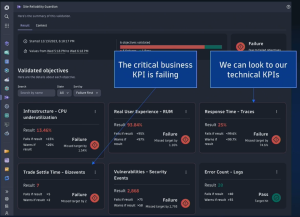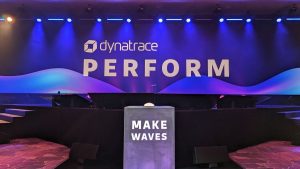Business goals and technology priorities are no longer siloed efforts, leading to the evolution of BizDevSecOps. Discover the benefits of unified observability and security for BizDevSecOps use cases.
BizDevSecOps might sound like a mouthful, but it marks a necessary evolution. As business goals and technology efforts continue to converge, organizations need to ensure teams are performing to their full potential. Business considerations are now part of the security, operations, and development framework.
During a session at Dynatrace Perform 2024, Dynatrace colleagues Kristof Renders, director of innovation services, and Brian Chandler, principal solutions architect, demonstrated four BizDevSecOps use cases for the Dynatrace unified observability and security platform. Additionally, the pair illustrated the effect users can expect after implementation.
Getting granular with user experience
It all starts—and ends—with user experience. When users encounter issues with applications or services, performance and productivity drop. As a result, organizations need complete visibility into the user experience both individually and at scale.
The Dynatrace real-time user experience dashboard helps organizations discover where issues are happening and how they’re affecting users. “You can see where drop-off happens,” Chandler said. “You can see where people can do business KPIs [key performance indicators], and you can see where downticks happen. We’ve built the ability to track all business SLOs [service-level objectives].”
And with Dynatrace Site Reliability Guardian, all teams across the organization can understand how their specific silo operates in relation to critical systems.

Triaging BizDevSecOps problems using segmentation
Equipped with data that offers insight into the user experience, organizations are better prepared to triage potential problems using PurePath distributed traces. This starts with segmentation.
“You can segment by user session,” Chandler said. “This lets you jump right into triage. You can get an overview of the individual user—from what ISP they’re using, to where they’re connecting, to their screen resolution.”

These are all metrics Dynatrace collects directly out of the box. Organizations can also drill deeper to discover what’s happening on the server side.
“Dynatrace PurePath can trace hop to hop what went on in a user interaction to give a highly sophisticated root-cause analysis,” Chandler noted. “All of this data can be bubbled up to a unified dashboard.”
Users can then connect this dashboard data with underlying technical data, such as service-level agreement metrics.
Managing BizDevSecOps incidents quickly and effectively
With problems triaged and root causes identified, BizDevSecOps teams are ready for incident management. For Renders, the key to incident management is the ability to connect cause and effect: identifying what’s going wrong, why it’s going wrong, and where it started. In modern IT environments, however, creating these connections isn’t easy.
Where organizations used to have a half dozen legacy applications running on premises, they now have hundreds of local and cloud-based applications pulling data from different sources simultaneously. This creates complexity. While the direct effects of IT problems are obvious, the sources are often obscured.
“When something goes wrong, you want to get to a solution as quickly as possible,” Renders said. “Dynatrace will tell you that something is wrong and what is wrong. We can connect the root cause to the process owner.”
Deploying secure, well-architected applications
While many BizDevSecOps use cases center around identifying issues and mitigating their effect, Dynatrace can also help organizations ensure that application design, delivery, and deployment align with industry best practices, such as the six pillars of the AWS Well-Architected Framework.
“We can actually go and look at leveraging security information to stop badly performing apps from being released,” Renders noted. “Then, we can ask Dynatrace if an app is adhering to development pillars. We can go into our workflows and map out a well-architected application.”
For example, when a new app build is deployed and automated tests are executed, the outcome may trigger a quality gate. Dynatrace then performs automated quality validation through SLOs that either pass or fail the application and provide feedback to developers.
Unified observability is key to BizDevSecOps progress
From user experience to triage, incident management, and DevSecOps, Dynatrace delivers a unified observability and security platform that combines advanced AI and automation capabilities. The unified observability and security platform presents data in intuitive, user-friendly ways. This enables teams to gather and analyze data, while reducing mean time to repair and improving the performance and availability of applications.
To learn more about how Dynatrace enables BizDevSecOps use cases, view the Perform session, “Top use cases for Biz, Dev, Sec, and Ops teams to get started with Dynatrace.” And for more information on news and insights from Perform, check out our guide.





Looking for answers?
Start a new discussion or ask for help in our Q&A forum.
Go to forum